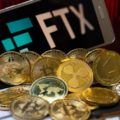Cryptocurrency exchange FTX went bankrupt last week as its accounting for billions in assets was trusteddollars disappeared.
Since then, some critics have criticized the very existence of centralized exchanges such as Sam Bankman-Fried's, arguing that they were not reliable stewards of clients' assets.
But the explosion has intensified debate about the potentiala solution called "proof of reserves" or PoR, a way to show - with virtually no doubt - how many tokens are on any exchange that uses this technique. If proof of reserves existed on FTX, it could theoretically prevent clients' money from moving where it shouldn't be (to the trading firm Bankman-Fried Alameda Research).
Binance, the world's largest cryptocurrency exchange byvolume, has already shared the balances in its wallets and said that it plans to conduct a review of the status of reserves “in the next few weeks.” Other exchanges that have made similar commitments include Gate.io, KuCoin, Poloniex, Bitget, Huobi, OKX, Deribit and Bybit.
Read more: Indian crypto exchange Giottus says it will provide proof of reserves while rivals remain silent
Proof of reserves is an audit methodused to confirm existing assets. Stablecoin issuers like Paxos use it to prove that they have enough assets backing their tokens, while exchanges like BitMEX use it to prove that customer deposits match the assets held in custody.
“This would be a fairly solvable problem ifthe balance sheet was more transparent. We already support several stablecoins, several gold coins and several financial institutions where we validate their balance sheets through reserve confirmation,” Sergey Nazarov told CoinDesk. Nazarov is the co-founder of the oracle network Chainlink, which offers a proof-of-reserve product.
How does Proof of Reserves work?
An organization has several ways to provetheir asset reserves, from traditional third-party audits conducted by companies like Armanino to “Merkle tree proofs” (cryptographic verification using data structures called Merkle trees).
Read more: Proof of reserves: could it have prevented the collapse of FTX?
Additionally, there are methods used by blockchain analytics companies. Chainlink, for example, divides the implementation of Proof-of-Reserves into two categories: off-chain and on-chain.
The offline alternative assumes thata third party provider, such as Chainlink, obtains access to an API (application programming interface) from the exchange, its custodian, or its auditor to independently verify the exchange's assets.
In any case, as a result, users can be convinced that the company really owns the assets that it claims.
Evaluated by industry experts
Eric Richmond is a corporate and corporate lawyer.securities turned crypto-entrepreneur. In 2019, he founded and led Tetra Trust, the first licensed digital asset custodian in Canada. He is currently the Chief Operating Officer of Coinsquare, one of Canada's largest cryptocurrency exchanges.
Read more: Canadian digital asset brokers Coinsquare and CoinSmart are merging
Coinsquare is registeredan investment dealer that reports to the Investment Industry Regulatory Organization of Canada (IIROC), a self-regulatory group of over 170 dealers similar to the Financial Industry Regulatory Authority (Finra) in the United States. a step in the right direction, regulation may be the best solution.
“We are required to produce daily reports tocompare our clients' liabilities to assets in cold storage,” Richmond explained. “We provide individual cold storage every day, which is our requirement under IIROC registration.”
Cold storage means storing assets offline, without an internet connection.
Other experts, such as Nick Carter, believethat confirming reserves is “the industry’s last hope in terms of making strong self-regulatory obligations.” Carter is a general partner at Castle Island Ventures, a firm that invests in cryptocurrency financial infrastructure.
“Lord knows we need to show regulators that we are capable of self-regulation, especially after FTX broke trust like this,” Carter told CoinDesk.
“PoR will prevent situations such asQuadriga, FTX or Gox. If any exchange now refuses to do this, I would expect people to be extremely skeptical of them,” he said.
Following the collapse of QuadrigaCX in 2019, the largestCanada's cryptocurrency exchange at the time, it was later revealed that its late founder and CEO Gerald Cotten had misappropriated and misappropriated customer funds, leaving creditors with only a fraction of the value. In 2014, Tokyo-based bitcoin exchange Mt.Gox collapsed due to poor security practices and questionable fund activities, leading to a massive hack. Lenders are still struggling to recoup some of those lost funds. The fall of these platforms, like the collapse of FTX, has forced the industry to consider significant improvements in fund management and custody.
Peter Eberle, president and chief investment officer of Castle Funds, an investment firm specializing in cryptocurrencies, echoed Carter's comments.
“I believe this will force exchanges to be moretransparent. They will need to prove that they are not commingling funds or lending out client assets. They will have to earn the trust of clients that they actually have the assets they say they have. they do,” Eberle told CoinDesk. “Audited financial statements, confirmation of reserves, will be standard in the future. This is something that should always have been there, but wasn’t.”
Johnny Liu, CEO of KuCoin, one of theof the world's largest cryptocurrency exchanges, also agrees that the industry needs more transparency. He says his organization has already begun conducting certifications.
“This is a matter of self-regulation of the entire industry.As for our next steps, we'll look at our internal data and then figure out what data can really put our users at ease. And then we will work with third parties to disclose data as needed,” Lyu told CoinDesk. “At this point, we have already disclosed information about larger and more influential tokens, including Ethereum and BTC.”
CoinDesk - Unknown off-chain Proof of Reserves (Chainlink)
The on-chain route includes a smart contract withproof of reserves on one network (usually Ethereum) that receives data feeds (block by block) from Chainlink's oracle network about balances in a provider's wallet on a network on another network. (e.g. bitcoin).





